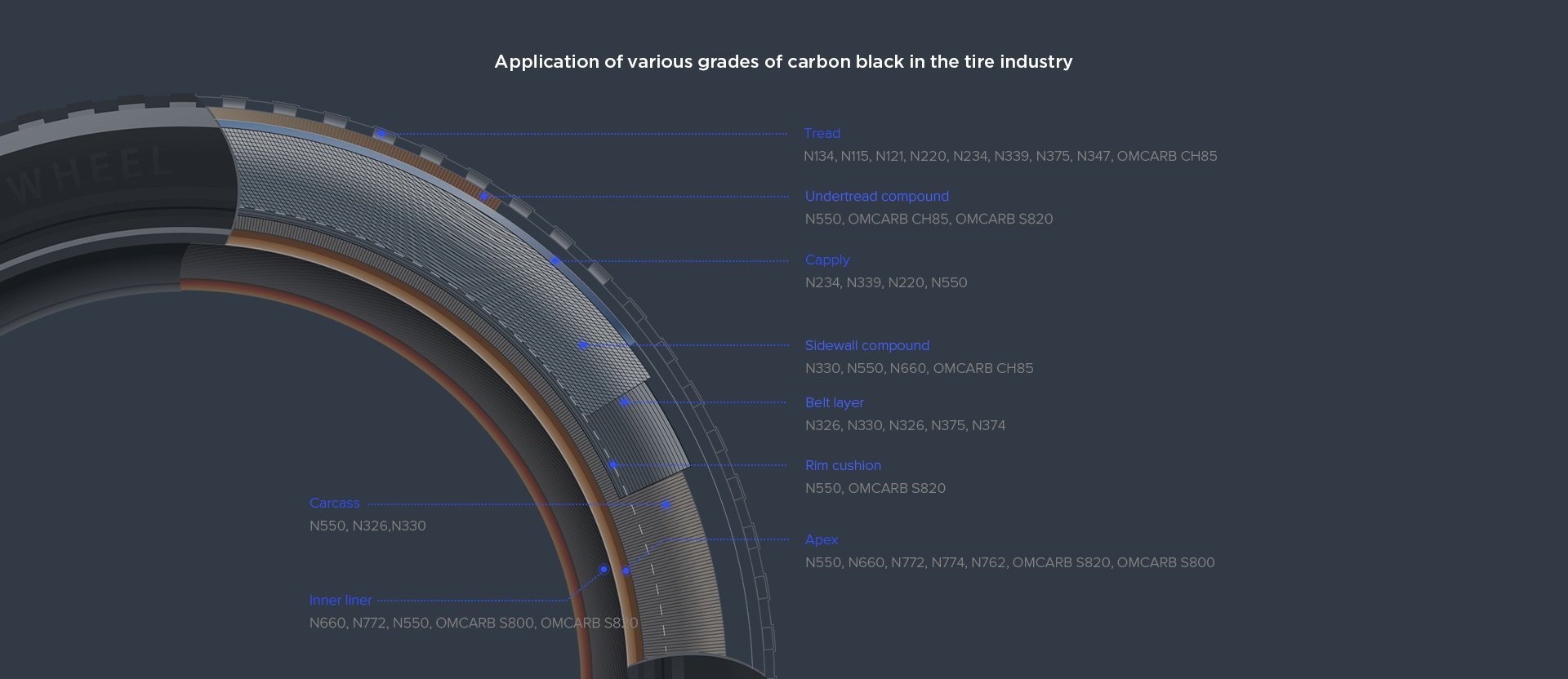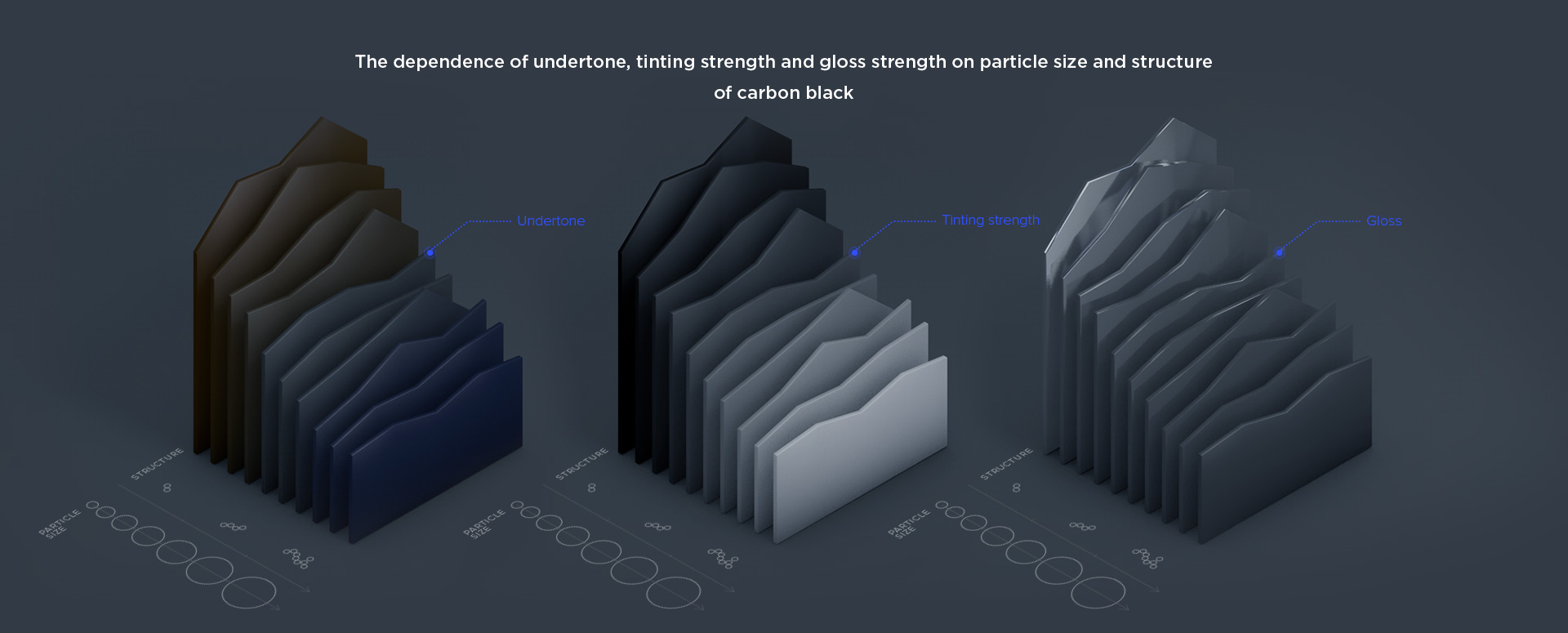Application
Products by Omsk Carbon Group are highly demanded in many areas of production and daily life.
Tires
The rapid development of the automotive industry, aircraft construction, agriculture and the mining industry poses challenges for the tire industry, requiring the development of production technologies and improving the chemical composition of tires.
Without the use of carbon black, a passenger car tire can only last for 100 km. A tire containing carbon black in its composition can circumnavigate the globe more than 5 times!
When a car is moving, the tires undergo heating and deformation. To overcome the resulting rolling resistance, the car has to consume up to 30% of its energy. OMCARB CH85 improves energy consumption by reducing fuel heating-up and consumption

Plastics
Widespread use of plastics in a variety of industries drives dynamic growth of the polymer sector.
There is a year-on-year increase in the consumption of plastics, with traditional materials such as wood, glass and metal being replaced.
Omsk Carbon Group offers solutions that provide polymers with electrical conductivity, antistatic properties, the ability to absorb UV radiation and slow the aging process of final plastic products.
50 years
The use of special p-type carbon blacks extends the service life of polymer pipes up to 50 years.
30 years
At least 30 years of guaranteed service life of cable products manufactured using conductive grades of carbon black.
OMCARB P72, OMCARB P108 - high-purity p-type grades, providing a high level of UV protection. Used in the production of agrofilms, polymer pipes and products in contact with food.
0.2 Ohm * m is volume resistivity achieved by adding conductive OMCARB C and OMCARB CH blacks to a compound.
Rubber products
Thanks to their high strength, elasticity and long service life, rubber products have become essential to many industries.
The use of special grades by Omsk Carbon Group improves mechanical, conducting and thermal properties of rubber and ensures maximum resistance to loads.
5%
The use of high-purity semi-active grades decreases final product cost by up to 5%.
3-5
The use of special high-purity grades reduces the number of defects on product surfaces 3 to 5 times.
OMCARB S-series is a special high-purity carbon black that helps reduce the number of milling cycles, cut mixing time and improve compound processibility and squeezeability.
OMCARB S500A, OMCARB S800 greatly improve surface smoothness in final products as compared to commodity grades.
Food contact
Specialty grades of carbon black have found usage in products that come into contact with food, consumer goods and toys.
PAH (polyaromatic hydrocarbons) are high-molecular organic benzene-series compounds, which are classified as priority pollutants because of their toxicity and carcinogenicity. International chemical laws strictly regulate the content of PAHs in carbon black and final products containing it.
The low level of PAHs in OMCARB P72, OMCARB P108 and FA series allows the use of these grades for the manufacture of dishes, toys and other items in contact with human skin and food..
Commission Regulation (EU) No. 10/2011 contains requirements for carbon black used for the production of plastic materials and items in contact with food.
OMCARB P72, OMCARB P108 and FA-series blacks
meet requirements of Commission Regulation (EU) No. 10 / 2011:
- Benz(a)pyrene ˂0.25ppm;
- Toluene extract ˂ 0.1%;
- Cyclohexane extract UV 386 nm
Printing inks and toners
Carbon black has a good coloring ability, which makes it possible to use it as one of the components for the production of inks and toners.
2 500 BC
The first mention of using soot as a base for black paint in the Ancient Egypt dates back to 2500 BC. Soot (carbon black) was scraped from the bottom of cookware or was specially produced in small flames from "lamps", from which carbon black was deposited on cooling surfaces. This method is a prototype of the channel method for the production of carbon black.
OMCARB P80 is a pelleted furnace carbon black characterized by easy dispersion, which is applied in engravings.

Particle size
Undertone: The higher the particle size is, the bluer is the undertone. The lower the particle size is, the browner is the undertone.
Tinting strength: The higher the particle size is, the less saturated is black (gray). The lower the particle size is, the more saturated is black.
Structure
Undertone: The higher the structure is, the bluer is the undertone. The lower the structure is, the browner is the undertone.
Tinting strength: The higher the structure is, the less saturated is black (gray). The lower the structure is, the more saturated is black.
Gloss: The higher the structure is, the less gloss is observed (matte surface). The lower the structure is, the more gloss is observed.